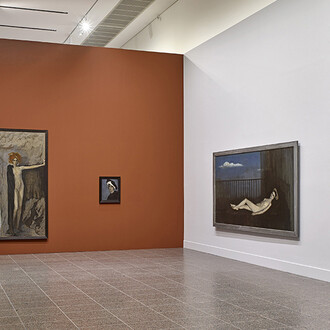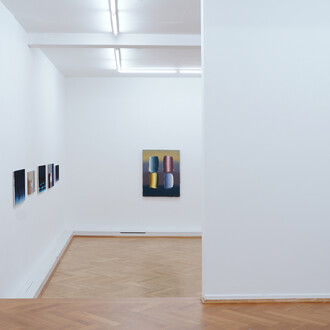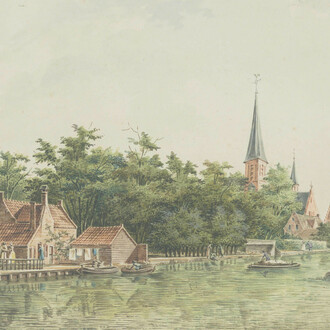The renowned member of the Brücke group of artists, Ernst Ludwig Kirchner, remarked in 1920, ‘You have to look at freehand drawings the way you read a letter from a close friend and also pay due attention to what is between the lines.’ The Collection of Prints and Drawings is a good place to follow Kirchner’s appeal and to enter wholeheartedly into the encounter with works ‘on paper’. The object of our collection is freehand drawings, printmaking and also early manuscripts on parchment, artist photography and, most recently, animation, in which hundreds of drawings are ‘set in motion’. In terms of time, the holdings range from the fifteenth to the present century.
Much like Kirchner in the twentieth, the Düsseldorf painter, Lambert Krahe in the eighteenth century was convinced of the necessity of studying drawings and prints. During a sojourn in Italy, Krahe had accumulated an extensive collection of Italian drawings – in particular, such by Baroque artists active in Rome. These drawings he sold, together with graphic works by artists of other schools, in 1778, intending thus to preserve them as a teaching stock and example for the Academy at Düsseldorf; upon his return from Rome, he became its first principal. Today, his original collection is housed and researched at the Collection of Prints and Drawings on permanent loan from the Kunstakademie. Among the drawings (numbering some 14 000) and the prints (about double that number) are many works by art-historical cornerstones such as Raphael or Bernini. Krahe collected as an artist for artists and often acquired extensive complexes of work directly from his contemporaries’ studios. In 1780, he published a portfolio of engravings on his collection, which made it known beyond Düsseldorf’s boundaries even at that time.
When, in 1819, the Royal Prussian Academy of Art was established in Düsseldorf, it took charge of the Krahe Collection and extended it by some current artistic stances. The teachers of the time, amongst whom were Peter von Cornelius and Wilhelm von Schadow, were invited to make over to the Academy year by year at least one print or drawing. Occasionally a larger body of work by artists of the region, such as Theodor Mintrop, would enter the Academy Collection and thus, today, that of the Stiftung Museum Kunstpalast.
From the very beginning, collecting in another field has been carefully tended, not least to keep the stocks a living entity, namely contemporary art. It was precisely there, of course, that the ‘degenerate art’ campaign of 1937 left some particularly painful gaps – 500 works were lost to it. After the Second World War, the gift of high-calibre Expressionist works made it possible for this area of the collection to become a strong feature again. The largest body of modern art consists of some 3000 drawings from the estate of Walter Ophey, an artist who had belonged to the Junges Rheinland group and who developed a singular kind of coloured chalk drawing. After the Second World War, individual lights such as Joseph Beuys, Karl Otto Götz, Gerhard Hoehme, Gotthard Graubner or Gerhard Richter were closely associated with Düsseldorf and are represented with larger sets of work. The complete print works of Antonio Calderara and Camille Graeser lend weight to Concrete Art within the collection, while Wolfgang Hanck’s recent, generous donation extends the area of contemporary art with striking instances, including smaller groups of drawings by Miriam Cahn, Silvia Bächli and Susan Turcot. The acquisitions of the nineteenth century unmistakably concentrated on German art; but from 1950, international instances once again came into the collection’s ambit; and, since the 1980s, a fine stock of Japanese wood block prints have added a further aspect to the holdings of nineteenth-century art.
Of relatively recent date is the Museum’s commitment to photography. Collecting was begun in 2002 and continues today, looking certainly to international photographers like David Goldblatt, but placing the emphasis on photography in Düsseldorf. Essential works by Bernd and Hilla Becher (ill.), donated to the Museum by the artists, form the nucleus of the collection, a constellation formed, in the interim, with series of works by Andreas Gursky, Candida Höfer, Thomas Ruff, Jörg Sasse, Ursula Schulz Dornburg and Thomas Struth.
The support of the Museumsverein has enabled us again and again to acquire outstanding individual drawings and prints. Although the holdings of the Prints and Drawings Collection are rooted firmly in the past, the department consciously meets the present and pursues new developments ‘on paper’ with interest. (GL)
















